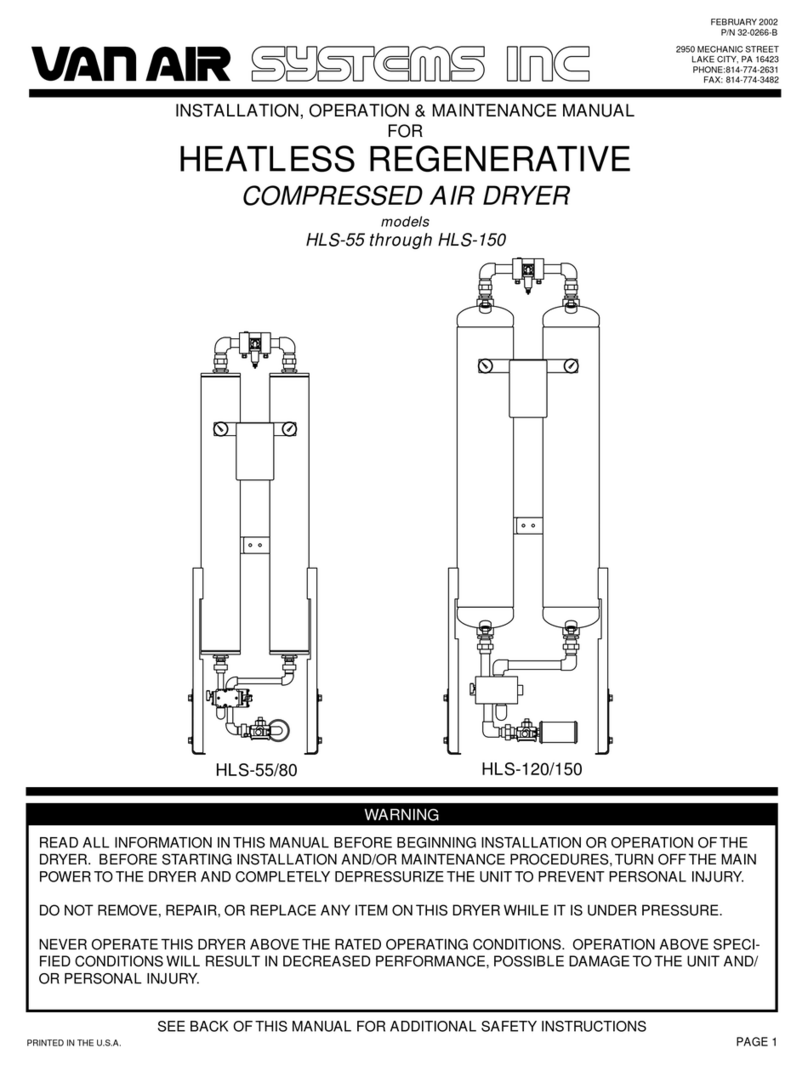
PAGE 3
FIGURE 2-C INSTALLING THE HEAT TAPE AND INSULATION
2.5 ELECTRICALCONNECTIONS
WARNING
BEFORE STARTING INSTALLATION OR
MAINTENANCE PROCEDURES, TURN
OFF ELECTRICAL POWER. FAILURE TO
HEED THIS WARNING MAY RESULT IN
SERIOUS PERSONAL INJURY AND/OR
DAMAGE TO THE UNIT.
WHEN INSTALLING THIS KIT ALWAYS
COMPLY WITH THE NATIONAL
ELECTRICAL CODE AND ALL OTHER
APPLICABLE FEDERAL, STATE AND
LOCAL CODES.
The 7/8" hole on the Right side of the controller is to be used for incoming
power. Remove the rubber plug from the hole and install appropriate conduit
fitting (not supplied).
The controller is rated for 120/240V-1PH-50/60Hz.
Make the necesssary wiring runs through the conduit from the aftercooler to
the controller. Make the wire connections at the junction box on the
aftercooler and fasten the cover to the aftercooler using the screws from the
old cover.
Complete the wire connections inside the controller as shown in FIGURES
2-E thru 2-H.
FIGURE 2-D INSTALLING THE CONDUIT AND COVER
SECTION 2 INSTALLATION
2.4INSTALLINGTHECONDUITANDCOVER
Install the straight conduit connector
on the junction box cover. The cover
with the connector will be used to
replace the cover shipped on the
aftercooler.
Remove the rubber plug from the hole
in the control box and install the 90
degree elbow connector as shown in
Figure 2-D.
The supplied conduit will be used to
run wires between the aftercooler
junction box and the controller. Trim
the conduit to the length needed.
Make sure that the conduit is long
enough so that when it is installed it
does not cross the fan guard(s).
Install the conduit.
2.3INSTALLING THEHEAT TAPEAND INSULATION
Remove the rubber plug from the hole in the
bottom of the controller and install the cord
grip as shown in Figure 2-C.
Cut the plug end off the heat tape. Remove
4" to 6" of the outer jacket. Strip back the
wires.
Push the wire end of the heat tape through
the connector. Allow enough cord inside
the box for wiring. Connect the heat tape as
shown in FIGURES 2-E thru 2-H. Tighten
the grip nut on the connector.
Run the heat tape to the separator. Wrap
the heat tape around the separator as
shown in Figure 2-C. DO NOT OVERLAP
THE HEAT TAPE.
Wrap the insulation around the piping and
heat tape as shown in Figure 2-C.




























